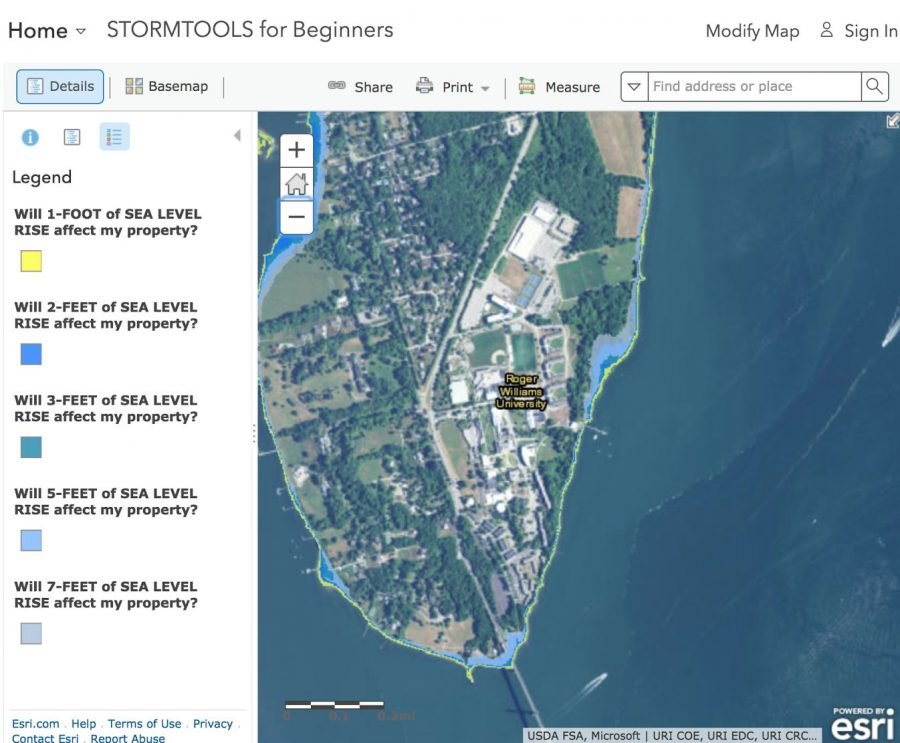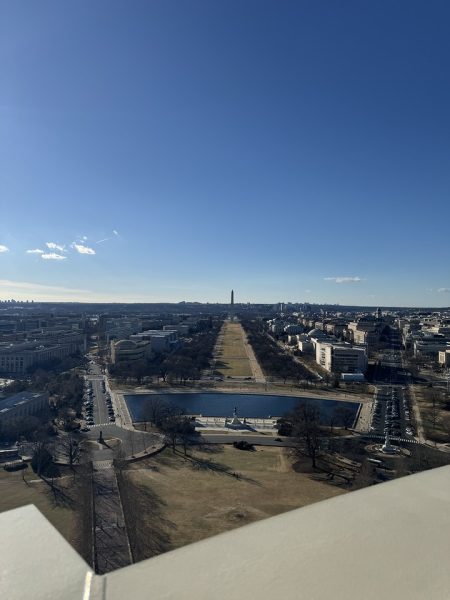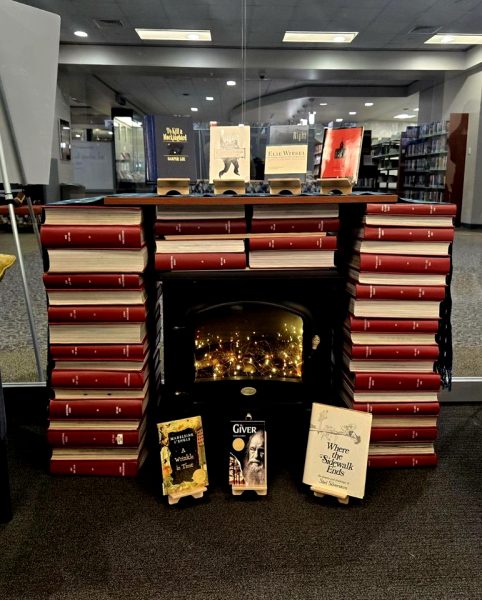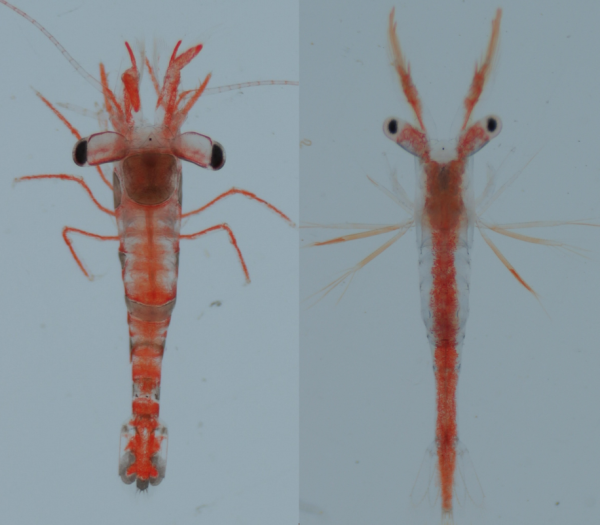RWU Wave Watchers conduct research on rising sea levels
The rise in sea level due to climate change has the potential to directly impact our university as well as the surrounding areas of Bristol and the rest of Rhode Island. The RWU Wave Watchers is a group of students dedicated to researching these statistics and advocating for change.
RWU Wave Watchers members, seniors Ty Jones, Hala Wakidi, and Kate Preston, conducted research about the rising sea levels and their effects on the Roger Williams University campus.This project is part of their class, Digital Media in a Global Society, which teaches both the positive and negative uses of technology in society.
“The inspiration for this project is the book ‘Cognitive Surplus’ by Clay Shirky,” Preston said. “He uses several examples of groups that have used social media as a platform to make changes in society. For our project, we are using Shirky’s method of means, motive, and opportunity.”
And they did just that. Their “mean”: use social media to make sure the message gets across to friends and peers at RWU.
Their “motive”: “We care about this campus and its future. We want future generations to enjoy south campus and the shell path area just as much as we did.”
Their “opportunity” is to make people on this campus care about the survival of Roger Williams University. It is supposedly a serious threat to the university that has not been talked about enough.
“We have spoken with two campus professors… who believe that because RWU is more elevated, we would not be as threatened by rising sea levels as other areas of Rhode Island or even Bristol. However, storm surges could have a big effect on the campus,” Preston said. “As we have seen recently, increased storm activity combined with a higher sea level due to climate change could result in more damage to the campus and maybe even the buildings closest to the water.”
This issue can greatly affect the marine life and the environment. P
“If the beach along the coastline and marsh areas are soon to be underwater, the animals that use this area for nesting or feeding will no longer have this habitat,” Preston said. “If these animals begin to die off, the rest of the food chain could be affected. For example, crabs that feed along the rocky coastline could see a reduced population. The small organisms or algae they feed on could rise in population because they will have fewer predators. Likewise, animals that feed on the crabs will have less prey so they will be affected as well.”
What can Roger Williams students do about this? According to Preston, “We think that students, faculty, and staff should be talking about this issue more. When we first thought about this topic, we realized it was sitting in the back of our minds, but no one ever discussed the fact that the fate of this campus lies within the water that surrounds it. We confirmed this idea when we brought it up to our class and our professor who agreed it is not talked about enough on campus.”
She continued, “Next, students can make small changes in their everyday lives to be more environmentally friendly. Climate change is a big issue, but if enough people make small changes we can make a difference. Small things like taking the campus shuttle instead of driving, using a reusable water bottle, and turning off the lights when leaving your room or apartment will all help to reduce our carbon footprint. Finally, we can make a change in our government. We can contact our state representatives or choose to vote for individuals who have an effective plan to combat climate change.”






